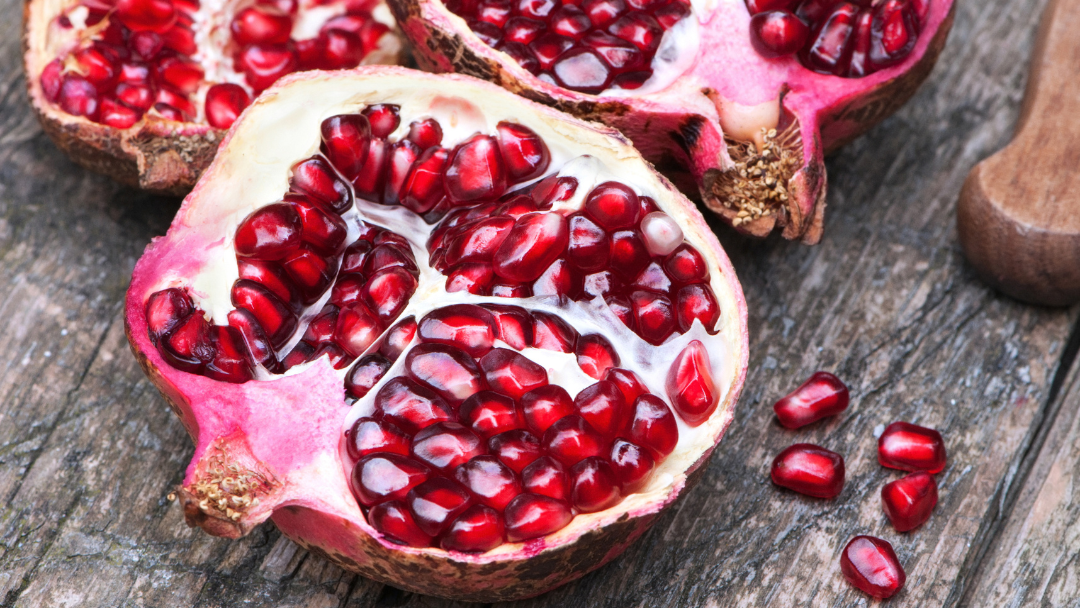Photo: Aleksandra Zaitseva/Shutterstock.com
Estrogen plays an important role in many areas of health in all genders, despite its association as a female sex hormone. While it is found in greater quantities in premenopausal females and does have an important role in ovulation and other female sex-specific functions in the body, estrogen plays a role in a variety of non-sex functions in the body such as glucose homeostasis, bone metabolism, brain function, and lipid homeostasis.
As with many hormones, it is important to have a balance, with depletion associated with digestive problems, osteoporosis, Alzheimer’s disease, and other disorders. High levels are associated with PCOS, cancer, endometriosis, and autoimmune disorders. Proper estrogen metabolism may also play an important role in health; what you eat can influence a healthier estrogen metabolism.
Estrogens and Estrogen Metabolism
While colloquially spoken of as simply estrogen, there are nine different estrogens, each one with a different purpose in the body. The main three are estrone (E1), estradiol or 17 beta-estradiol (E2), and estriol (E3). E2, synthesized in the gonads, is the main estrogen for premenopausal women. E1 is synthesized in the adrenals and adipose tissue, playing a larger role in postmenopausal females. Estriol, the least potent of the three, is important during pregnancy. In males, testosterone is synthesized to estradiol and androstenedione to estrone.
An important part of the hormone’s lifecycle is estrogen metabolism, during which metabolite synthesis occurs for either reabsorption or excretion. In general, E1 and E2 undergo phase 1 biotransformation to become 2-hydroxy or 4-hydroxyestrone/estradiol or 16–alpha-hydroxy estrogens, relying on the cytochrome P450 family of enzymes. The CYP1A1 gene regulates the metabolism in the liver while the CYP1B1 gene does so outside the liver, mainly in the breasts, ovaries, and uterus. In phase 2, these metabolites are conjugated through sulfation via steroid sulfotransferases or glucuronidation (requiring COMT and GST).
The different estrogen metabolites act differently on the body, some of which may have more detrimental effects such as 16–alpha-hydroxyestrone, which increases breast cell proliferation and binds to the estrogen receptor, promotes mammary gland tumors, and may act directly on DNA as a mutagen. Estrone may also be metabolized to 2-hydroxyestrone, which has a low affinity for the estrogen receptor and is rapidly methylated and may inhibit angiogenesis. Thus, 16-alpha-hydroxyestrone is an estrogen agonist, while 2-hydroxyestrone is an estrogen antagonist. Comparing the two can be a marker for breast cancer risk, with higher urinary 2:16 ratios demonstrating a protective effect. Studies have found that a ratio above 2.0 has a reduced risk for estrogen-sensitive cancers. Additionally, 4-hydroxyestradiol can bind to estrogen receptors similar to E2, activating the normal estrogen pathways, and has demonstrated some carcinogenic potential.
While some levels of all the metabolites occur during normal estrogen metabolism, it becomes important to support overall metabolism and detoxification to either reduce the synthesis of or excrete the more potentially harmful estrogen metabolites, so they are not recirculating and potentially causing harm.
Eating to Support Estrogen Metabolism
Estrogen metabolism and detoxification follows similar pathways as many endogenous metabolites and exogenous toxins and xenobiotics. As such, many dietary patterns and foods that support the liver and detoxification pathways as well as bile support likewise support estrogen and its metabolites. That being said, let’s take a look at some of the foods and dietary patterns studied for specifically managing levels of estrogen and its metabolites.
Herbs and spices can add delicious flavors to meals, and they also have important health-promoting properties. Rosemary may aid in estrogen metabolism. Researchers tested rosemary extract to determine its effect on triple-negative breast cancer cell proliferation. They reported that rosemary extract does possess anticancer properties, although more studies are needed to confirm the results.
Fiber consumption is important for overall health, including its influence on the microbiome and its role in supporting excretion. Additionally, it aids in estrogen metabolism and excretion. Estrogens frequently get reabsorbed, and roughly 10% are excreted via feces.
The type of fiber makes a difference in its role in detoxification and excretion. In one study, fiber from fruits and vegetables, and grains to a lesser extent, led to higher serum concentrations of 16–alpha-hydroxyestrone compared to fiber from legumes. The researchers postulated that this is due to soluble fiber activating hepatic CYP1A2 enzymes, which in turn increase the conversion of E1 to 16–alpha-hydroxyestrone. One study on postmenopausal women found a 22% reduction of E1 and a 17% reduction of E2 with higher dietary fiber intake. The type of fiber did matter, as they reported that dietary fiber combined with soluble and insoluble non–starch polysaccharides had a greater decrease of estrogens (47% for E1 and 69% for E2), while soluble intake led to increases of E1 (64%) and E2 (69%). Avocado and grapefruit specifically had a significant positive association with E1 levels.
Phytoestrogens, including lignans and soy isoflavones, are often researched for their influence on estrogen. In vitro studies have found that phytoestrogens affect the enzymes involved in estrogen synthesis or metabolism. A small study of 12 healthy premenopausal women supports this. The participants consumed a soy protein powder, and increased soy isoflavone consumption led to decreased urinary excretion of all three estrogens as well as total estrogens and the estrogen metabolites. There was also an increase in the 2:16 ratio and a decrease in the genotoxic to total estrogens ratio. The researchers postulated that this demonstrated the potential for soy isoflavones to decrease estrogen synthesis and alter the metabolism into safer metabolites.
The lignans in flaxseed may likewise support estrogen metabolism. In a meta-study, researchers reported flaxseed’s influence on estrogen metabolism and expression of receptors, depending on dose.
Cruciferous vegetables can shift estrogen metabolism, specifically of estrone into 2-hydroxyestrone rather than the more harmful 16-hydroxyestrone for a higher 2:16 ratio and lower breast cancer risk. This effect comes from the unique phytochemicals indole glucosinolates, including the indole structures indole-3-carbinol (I3C), diindolylmethane (DIM), indole-3-acetonitrile, and indole-3-acetic acid. They are converted into indolo[3,2-b]carbonzole, which is an aryl hydrocarbon receptor agonist that induces the expression of P-450 enzymes to hydroxylate E1 on the second carbon for more 2-hydroxyestrone production, thereby decreasing the amount of E1 available to convert into 16-hydroxyestrone.
A small pilot study found that 14 days of supplementing with DIM led to an increase of the 2-hydroxyestrone to 16-alpha-hydroxyestrone ratio. In one study focusing on dietary intervention rather than supplements of extracts of indoles, women were divided into groups consuming sufficient levels of Brassica vegetables to equate 70-mg/day of Brassica phytochemicals (IGSLs), which was around two servings a day or 193 g/day. At baseline, the average 2:16 ratio was 2.27, and after the intervention, it increased to 2.38. They also reported that vegetable preparation did not have an impact on estrogen metabolism, although participants were instructed to cook the vegetables through steaming or other light cooking methods.
Therefore, consuming cruciferous vegetables, rosemary, soy, flaxseed, and sufficient fiber may aid in maintaining a healthy balance of estrogens and estrogen metabolites to reduce the risk of a variety of health conditions, including cancers.
Eating Patterns that Support Estrogen Metabolism
While focusing on foods in a diet may support synthesizing the safer estrogen metabolites, finding a beneficial overall eating pattern can sometimes make it easier to implement as an overall lifestyle. Many studies demonstrate a general healthy eating pattern supports estrogen metabolism, especially compared to that of a Western diet.
For example, one study on postmenopausal women following a Mediterranean eating pattern for 6 months demonstrated a more than 40% decrease of total estrogen levels, as well as the estradiol and estrone metabolites. Another study on postmenopausal women found that a higher score on their Alternate Healthy Eating Index (AHEI) (a ranking based on the intake of fruits, vegetables, white to red meat ratio, trans fat, polyunsaturated to saturated fat ratio, cereal fiber, nuts and soy, alcohol consumption, and long-term multivitamin use) correlated with lower levels of estradiol and free estradiol, along with higher concentrations of sex hormone-binding globulin (SHBG). A prudent eating pattern (higher intake of fruits, vegetables, and whole grains) had no associations, while a Western eating pattern was associated with higher levels of estradiol and lower concentrations of SHBG.
Reducing meat consumption has been shown to correlate with lower levels of estrogen levels in the blood. A study with both pre– and post-menopausal women found that vegetarians had significantly higher SHBG and lower free E2, testosterone, and DHEA-S compared to omnivores. In one observational study on postmenopausal women, consuming higher levels of refined grains, cheese, and luncheon meats had higher levels of unconjugated E2, while there was an inverse association with coffee and yogurt. In this study, eating patterns with refined grains, tomatoes, cheese, luncheon meats, and lower levels of cruciferous vegetables, nuts and seeds, fish, yogurt, coffee, and vegetables, correlated with a high E2 and low 2:16 ratio, which is correlated with an increased breast cancer link.
Researchers found a correlation between a Western dietary pattern and higher levels of serum free estradiol. For each 1 unit increase in the dietary pattern index for the Western diet, there was an increase of 16.2% of serum free estradiol. Upon breaking down the pattern into individual foods, they observed the greatest association with red meat and chicken eggs.
A study focused on animal product consumption and circulating steroid hormones in postmenopausal women found that higher dairy consumption correlated with higher levels of estradiol, with 15% higher total and 14% higher free estradiol for the women in the highest quartile of consuming dairy products compared to the lowest. In men, a high-fat, low-fiber diet led to a reduction of urinary excretion of estrone and 2-hydroxy metabolites (12-28%) and an increase of testosterone excretion, demonstrating that the opposite may support healthier hormone levels.
Using reduced rank regression statistical procedures, researchers examined eating patterns that correlated with estradiol and estrone sulfate levels and any association with breast cancer risk. They found eating patterns higher in red meat, legumes, and pizza, but lower in coffee and whole grains, correlated with estradiol and estrone sulfate, remaining statistically significant after adjusting for BMI. There was no association between postmenopausal breast cancer risk, and they did not identify any eating pattern that had a strong association with estrogen levels.
While you do not have to become a vegetarian to have optimal estrogen levels, the evidence does demonstrate that eating patterns more focused on plant-based whole foods generally had better estrogen levels than those following a Western-style diet or consuming high levels of animal products, especially processed animal products such as lunch meats.
The best evidence thus far for specific dietary components for supporting estrogen metabolism are cruciferous vegetables, phytoestrogens, fiber, and an overall healthy eating pattern. Consuming a colorful, plant-based, whole foods diet can help maintain many body pathways and processes, including those of key hormones such as estrogen. If you feel that you have an additional need for supporting your estrogen metabolism and detoxification, talk to your doctor, nutritionist, or another member of your healthcare team about your diet and/or supplements.





